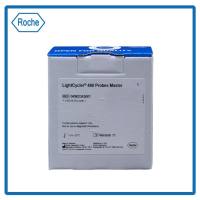Localization of mRNAs in Brain Sections by in situ Hybridization Using Oligonucleotide Probes
互联网
539
The analysis of gene expression in the central nervous system is complicated by the diversity of its anatomical structures, the heterogeneity of its cell types, and the large number of genes that these cells express. The technique of in situ hybridization histochemistry has both the sensitivity and the resolution to allow the precise determination of mRNA localization at the single cell level with relative ease. Furthermore, the resolution provided by this technique is important given that it has become clear that certain mRNA species display specific patterns of subcellular localization (for example, see Bruckenstein et al., 1990). It should be realized that because in situ hybridization histochemlstry provides an accurate measure of mRNA distribution, it does not automatically follow that the corresponding protein product is similarly distributed. This is particularly true in the nervous system, given the complex morphology of neurons, where proteins may be localized in dendrites or axons at some distance from their corresponding mRNA. Nevertheless, in many cases there appears to be general concordance with mRNA and protein distribution, even within large gene families such as that which encodes GABAA receptor subunits (Laurie et al., 1992; Wisden et al., 1992; Fritschy and Mohler, 1995).








